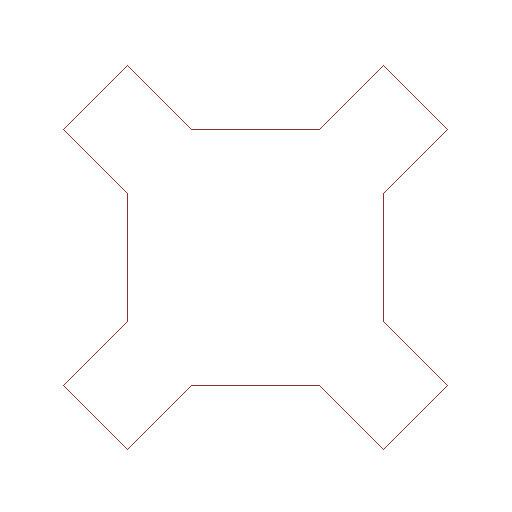 | ||
Sierpiński curves are a recursively defined sequence of continuous closed plane fractal curves discovered by Wacław Sierpiński, which in the limit
Contents
Because the Sierpiński curve is space-filling, its Hausdorff dimension (in the limit
The Euclidean length of
i.e., it grows exponentially with
Uses of the curve
The Sierpiński curve is useful in several practical applications because it is more symmetrical than other commonly studied space-filling curves. For example, it has been used as a basis for the rapid construction of an approximate solution to the Travelling Salesman Problem (which asks for the shortest sequence of a given set of points): The heuristic is simply to visit the points in the same sequence as they appear on the Sierpiński curve[1]. To do this requires two steps: First compute an inverse image of each point to be visited; then sort the values. This idea has been used to build routing systems for commercial vehicles based only on Rolodex card files[2].
A space-filling curve is a continuous map of the unit interval onto a unit square and so a (pseudo) inverse maps the unit square to the unit interval. One way of constructing a pseudo-inverse is as follows. Let the lower-left corner (0, 0) of the unit square correspond to 0.0 (and 1.0). Then the upper-left corner (0, 1) must correspond to 0.25, the upper-right corner (1, 1) to 0.50, and the lower-right corner (1, 0) to 0.75. The inverse map of interior points are computed by taking advantage of the recursive structure of the curve. Here is a function coded in Java that will compute the relative position of any point on the Sierpiński curve (that is, a pseudo-inverse value). It takes as input the coordinates of the point (x,y) to be inverted, and the corners of an enclosing right isosceles triangle (ax, ay), (bx, by), and (cx, cy). (Note that the unit square is the union of two such triangles.) The remaining parameters specify the level of accuracy to which the inverse should be computed.
Drawing the curve
The following Java applet draws a Sierpiński curve by means of four mutually recursive methods (methods that call one another):
The following Logo program draws a Sierpiński curve by means of recursion.
to half.sierpinski :size :level
if :level = 0 [forward :size stop]
half.sierpinski :size :level - 1
left 45
forward :size * sqrt 2
left 45
half.sierpinski :size :level - 1
right 90
forward :size
right 90
half.sierpinski :size :level - 1
left 45
forward :size * sqrt 2
left 45
half.sierpinski :size :level - 1
end
to sierpinski :size :level
half.sierpinski :size :level
right 90
forward :size
right 90
half.sierpinski :size :level
right 90
forward :size
right 90
end
